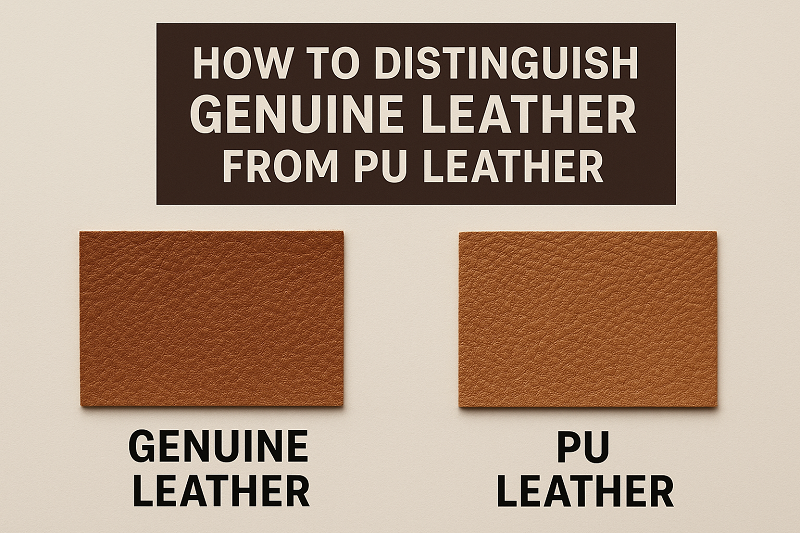- All
- Product Name
- Product Keyword
- Product Model
- Product Summary
- Product Description
- Multi Field Search
Views: 525 Author: Site Editor Publish Time: 2025-10-16 Origin: Site
In high-end packaging such as jewelry boxes, watch boxes, and cosmetic gift sets, leather materials are often seen as a symbol of luxury and sophistication. However, in today’s market, genuine leather and PU (synthetic) leather can look so similar that even professionals may struggle to tell them apart. For packaging designers and brand owners, understanding how to distinguish these two materials is crucial—not only for cost control but also for accurate product positioning. This article explains in detail how to differentiate genuine leather from PU leather.

Genuine leather shows natural, irregular grain
The surface of real leather has fine but uneven pores and textures. Each piece is unique, giving it a soft and natural appearance.
PU leather has uniform, repeated patterns
Synthetic PU leather is embossed with molds, resulting in very consistent and mechanical-looking grain patterns.
Genuine leather is soft and elastic
When you press the surface, it forms wrinkles that quickly disappear once released—indicating flexibility and resilience.
PU leather feels smoother and stiffer
PU leather often feels slick, slightly plastic-like, and less elastic. Wrinkles may stay longer after pressing.
Genuine leather naturally emits a mild, organic leather scent, while PU leather tends to have a chemical or plastic odor.
If a new product gives off a sharp or synthetic smell, it’s most likely PU or PVC synthetic leather.
Genuine leather has a fibrous back
The cross-section of real leather reveals dense fibers that do not easily separate.
PU leather has a fabric or nonwoven backing
You can often see a textile layer or synthetic fiber mesh—this is one of the most obvious identifiers.
Take a small sample and burn it:
Genuine leather produces a smell like burning hair and leaves powdery ash.
PU leather emits black smoke and a plastic-burning odor, leaving hard, clumped residue.
⚠️ Note: This method should only be used for testing scraps, not finished products.
Genuine leather is more expensive but offers greater longevity and a premium texture—ideal for luxury jewelry boxes or brand packaging.
PU leather is more affordable, lightweight, and easier to maintain—suitable for mid-range or mass-production packaging.
While genuine and PU leather may appear similar at first glance, you can easily tell them apart through close observation and simple testing.
For brands, the choice between the two depends on product positioning and budget. If the goal is luxury and durability, genuine leather is the best choice. If the focus is affordability, versatility, and eco-friendliness, PU leather provides an ideal balance.